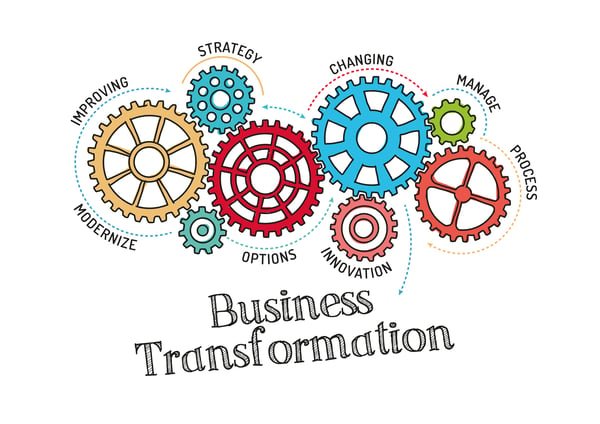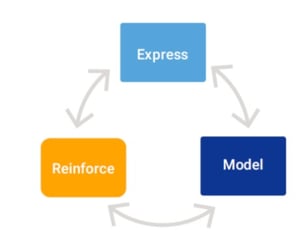Let’s get real. If you are working on a transformational change are you doing more with less or doing different things differently? Are you looking for incremental change or transformational change? It’s your choice, but if you say the latter and deliver the former (or nothing at all) you are going to pay a heavy price in your organization. 
There are three types of business changes:
- Minor - Business as usual changes
Minor alterations to the Frame of Reference (FOR) resulting in minimal disruption and resistance - 1st Order - Doing the same things, but a little better / faster / cheaper
Major alterations to the existing FOR resulting in significant resistance - 2nd Order - Doing new things, in completely different ways
The old FOR is no longer adequate. A new FOR must be created resulting in maximum disruption and resistance
Transformational change, by definition, is 2nd order frame-breaking change. While these changes may make perfect sense for your organization, don’t kid yourself by thinking it is going to be easy. If there is one thing you take from this article it is this… do NOT waste your time or your scarce resources on things that will not help you to transform.
Here are my top 10 things that will NOT transform your business:
- The compelling new vision and story being communicated company wide
- The “Leadership Development Program” promising to shift your culture
- The two million dollar 150-slide deck from hired consultants showing how five strategic pillars, foundations / principles integrate with the seven horizontals, glidepaths / workstreams
- A series of town hall meetings telling your organization this time will be different
- Mapping the end-to-end process (once again) and eliminating ancillary people
- A bold, new logo (even though it does look good)
- Shuffling executives around the various boxes on the organizational chart
- Engagement surveys
- Consultants
- Downsizing
The 4 Fundamentals of Transformation
If You Don’t Change the Reinforcement You Don’t Get the Transformation
The fact is your current organization is perfectly designed. It is perfectly designed to give you the outputs you are getting today. You cannot continue to reinforce the same old values and behaviors in your organization and expect to get change, let alone transformation.
Every time you see a pattern of behavior replicated somewhere there is or was a reward for that behavior. There is no such thing as behavior in isolation. Your people do not wake up in the morning and say, “I think I’ll guard my turf today.” Patterns of behavior are repeated if they are deemed at an individual or organizational level to be successful.
You cannot get transformation in the organization without gutting your performance management and reinforcement systems. But remember, reinforcement is not just the performance appraisal process. I am referring to the total application of rewards and penalties between manager and direct report all day every day.
Sponsorship is the Single Most Important Element in Successful Transformation
Gandhi said, “Be the change you are trying to create.” You cannot get transformational change with minor changes in Sponsor behavior. First, Sponsorship is a very active condition. It is not chairing a committee,  making a speech or even signing the check. Sponsorship is the alignment of that what sponsors say, do and reward.
making a speech or even signing the check. Sponsorship is the alignment of that what sponsors say, do and reward.
Expressing “transformation” but reinforcing incremental improvement erodes the trust in the organization. Worse yet; expressing “transformation” and reinforcing “head count reduction” will destroy the it!
Remember, trust is not some warm and fuzzy issue. Trust and speed are functional:
high trust = high speed
low trust = high resistance, higher cost and slower speed of implementation
Transformation Requires Substantive Change at the Personal Level for Sponsors
This is the failure of most transformational efforts. The “Modeling” that must occur on the part of Sponsors for transformation must appear to be personally painful. There must be some overt and demonstrable change in Sponsor behavior that signifies a sacrifice in the part of that Sponsor. Otherwise it appears that transformation is for everyone “out there” and not for those people living in “Mahogany Row.”
If Sponsorship is the single most impactful factor in accelerating transformation then it cannot possibly follow that you can create transformational change with minor changes (or no changes) in Sponsor behavior.
Therefore, the most successful transformations occur when the incumbent Sponsors live their own transformational journey in plain view of the organization, that the inherent transparency of their Modeling, their willingness to sacrifice at a personal level, and the substantive changes at an individual level lead the organization and drive transformation.
Always Anticipate the Most Resistance from Those Individuals with the Highest Vested Interest in the Situation Remaining the Same
Resistance is inevitable and not necessarily logical, or that which is logical to you is not necessarily logical to everyone else. Resistance is a function of disruption: even if people like and understand the change you will still get resistance. When we apply this concept to transformation, it means the most disruption will occur with those individuals who were most successful under the old system.
Therein lies the conundrum, the paradox of the sponsorship of transformation: many times, the people we seek to sponsor have the most resistance because we are asking them to fly in the face of their previous success. Therefore, we can anticipate far more resistance to transformation from mid-managers through the executive ranks then we will experience down lower in the organization.
When implementing a transformation, forget the PowerPoint decks, the training programs, and the herds of junior consultants roaming freely throughout your organization. You can’t be seduced by activity when you are attempting to change the basic fabric of your organization! Instead, understand the prices that must be paid at the individual and organizational level and then… step up and pay them.


